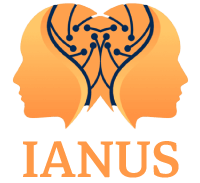With its aim to strengthen warranted trust in science, research, and innovation, the IANUS project is continuously involved in examining and developing science communication and participatory methods to open up science.
In order to pursue this goal, IANUS embarked on a journey to identify and map good, pioneering public engagement practices and activities. Our partners compiled a list of best practices for participation in research that could be translated into a set of standards to understand how participatory methodological approaches have been employed in other European projects.
To do so, our partners from WP5 focused on the CORDIS platform (‘Community Research and Development Information Service’)— the European Commission’s public repository and portal to disseminate information on all European Union funded research projects and their results— and screened it for Horizon 2020 or Horizon Europe-funded projects that used participatory methods or participation. They then selected the projects that had the goal to produce knowledge through participatory research— particularly in the domain of Science, Technology and Innovation issues—which either employed participatory methods or developed participatory approaches. This yielded a total of 15 projects to analyze.
Deliverables, reports, white papers, and other documents from each selected project constituted a corpus to conduct qualitative analysis through a grounded theory approach. The analysis highlighted two key categories:
- Creativity in participatory method development: Most of the projects used existing participatory methods and combined features of these methods to suit their own research questions and contexts and we could not identify new methods that strayed far off of already established approaches to participation (e.g. co-creation labs, science shops). This “conservative” approach to methodological development could be a result of a tension between the expectations that arise due to short-term, project-based funding. However, this creative tinkering of and with the methods, so we argue, illustrates a creative response to and approach of ensuring the used methodology is fit to a project’s needs, but also fitting the Zeitgeist methodologically.
- Sustainability of the participatory processes: This tinkering approach also relates to and becomes visible through the sustainability of the participatory processes developed. The analyzed projects’ restraint in developing methods that differ from existing approaches, derives, at least partially, from the funding structures that make these participatory processes possible in the first place. At the same time, such restraint(s) can also be seen as an attempt at fostering sustainability since routinely-used participatory methods are more likely to be taken up by existing institutional structures. These institutions might already have people that are trained to execute these methods and settings that can easily accommodate them.
Throughout the coding process, it became evident that one cannot claim that there are new methods evolving in participatory research, but rather that new issues are raised concerning the methods used in the analyzed projects. The two points highlighted by the analysis bring us to the conclusion that identifying what ‘emerging’ or ‘innovative’ co-creation approaches mean is especially challenging, and our findings ultimately led us to reflecting on the implications of methodological innovation itself.
In the analyzed projects, the methods were creatively tinkered in order to address the needs of the respective project focus, utilizing existing participatory approaches as methodological toolboxes. Novelty and innovation in methodological development, therefore, are not always necessary to ensure these participatory approaches reach their goals of democratizing scientific processes.
